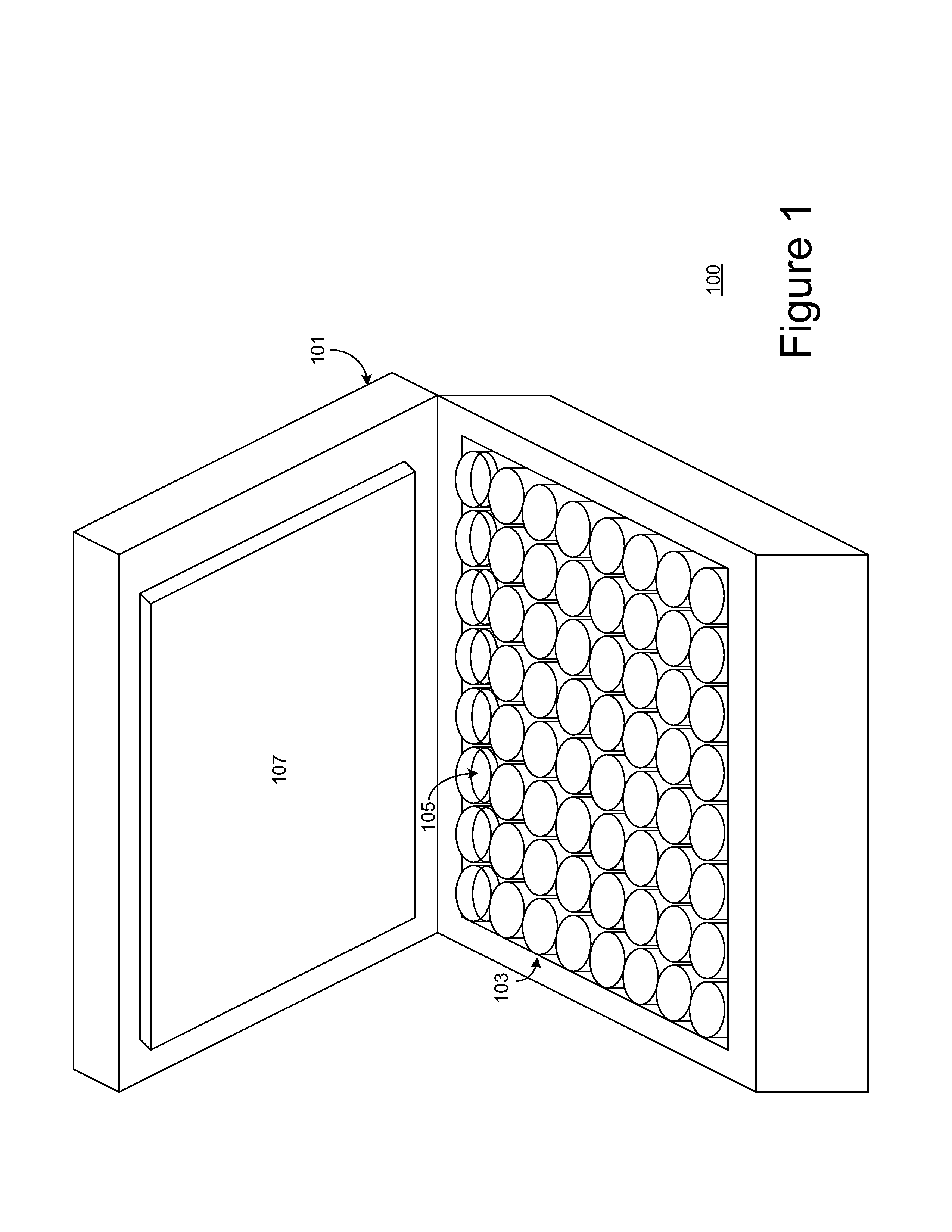Multiplex digital PCR
a digital pcr and multi-channel technology, applied in the field of multi-channel digital pcr, can solve the problems of difficult to multi-plex beyond 5-plex, and difficult to achieve high-level multiplexing, so as to improve the existing dpcr solution, enhance control, and reduce the effect of cos
- Summary
- Abstract
- Description
- Claims
- Application Information
AI Technical Summary
Benefits of technology
Problems solved by technology
Method used
Image
Examples
example illustration
[0072 is as follows:[0073]Probe 1, 33% red 33% primer[0074]Probe 2, 33% red, 66% primer[0075]Probe 3, 33% red, 100% primer[0076]Probe 4, 33% blue, 33% primer[0077]Probe 5, 33% blue, 66% primer[0078]Probe 6, 33% blue, 100% primer
[0079]Probe 7, 33% orange, 33% primer[0080]Probe 8, 33°7˜orange, 66% primer[0081]Probe 9, 33% orange, 100% primer[0082]Probe 10, 33% yellow, 33% primer[0083]Probe 11, 33% yellow, 66% primer[0084]Probe 12, 33% yellow, 100% primer[0085]Probe 13, 33% primer[0086]Probe 14, 66% primer[0087]Probe 15, 100% primer
Total concentrations:
Red=100%, blue=100%, orange=100%, yellow—100%, intercalating dye (green)—100%.
[0088]Now 15-plex amplification is achieved, using end-point, or real-time detection if desired, with no more than 100% total reporter concentrations in any given spectral band. This is true even in the green spectrum which is used to help identify over 15 primer / probe pairs. Further additions of multiplexed probes which utilize information in the green spectra...
PUM
| Property | Measurement | Unit |
|---|---|---|
| concentration | aaaaa | aaaaa |
| volumes | aaaaa | aaaaa |
| volume | aaaaa | aaaaa |
Abstract
Description
Claims
Application Information
 Login to View More
Login to View More - R&D
- Intellectual Property
- Life Sciences
- Materials
- Tech Scout
- Unparalleled Data Quality
- Higher Quality Content
- 60% Fewer Hallucinations
Browse by: Latest US Patents, China's latest patents, Technical Efficacy Thesaurus, Application Domain, Technology Topic, Popular Technical Reports.
© 2025 PatSnap. All rights reserved.Legal|Privacy policy|Modern Slavery Act Transparency Statement|Sitemap|About US| Contact US: help@patsnap.com



